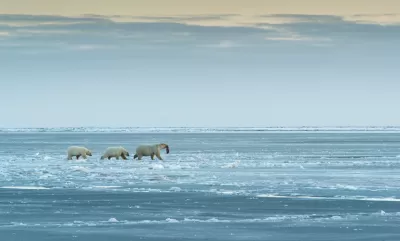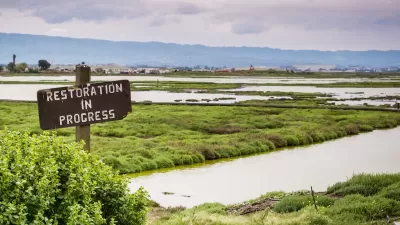Scientists believe we have entered a sixth mass extinction event, calling for conservation and documentation of species before they are lost forever.

A research team from the University of Hawaii’s Pacific Biosciences Research Center is warning that the Sixth Mass Extinction—an extinction event predicted by scientists and largely driven by anthropogenic causes like rapid climate change—may have already begun. As Becky Ferreira writes in Vice, the team analyzed extinction data for mollusks, which the researchers argue provide a better random sample of biodiversity than vertebrates, which only make up 5 percent of animals.
The team is basing its conclusion on the rate of extinction, adding that the crisis is more severe on land than in the oceans. According to their analysis, between 7.5 and 13 percent of species have become extinct since 1500. A catastrophic extinction event is defined as a loss of 75 percent or more of species.
Robert Cowie, who leads the research team, says he feels "obligated to express opinions" due to the urgent nature of their findings. But Cowie admits that conservation efforts won't save every species, saying "We feel that the most important thing we can do for the future is to preserve as many of these species as possible in museums, so that in 200, 300, or 500 years from now, people will still be able to say this is what the Earth once had."
FULL STORY: Scientists Warn that Sixth Mass Extinction Has ‘Probably Started’

Alabama: Trump Terminates Settlements for Black Communities Harmed By Raw Sewage
Trump deemed the landmark civil rights agreement “illegal DEI and environmental justice policy.”

Study: Maui’s Plan to Convert Vacation Rentals to Long-Term Housing Could Cause Nearly $1 Billion Economic Loss
The plan would reduce visitor accommodation by 25% resulting in 1,900 jobs lost.

Why Should We Subsidize Public Transportation?
Many public transit agencies face financial stress due to rising costs, declining fare revenue, and declining subsidies. Transit advocates must provide a strong business case for increasing public transit funding.

Paris Bike Boom Leads to Steep Drop in Air Pollution
The French city’s air quality has improved dramatically in the past 20 years, coinciding with a growth in cycling.

Why Housing Costs More to Build in California Than in Texas
Hard costs like labor and materials combined with ‘soft’ costs such as permitting make building in the San Francisco Bay Area almost three times as costly as in Texas cities.

San Diego County Sees a Rise in Urban Coyotes
San Diego County experiences a rise in urban coyotes, as sightings become prevalent throughout its urban neighbourhoods and surrounding areas.
Urban Design for Planners 1: Software Tools
This six-course series explores essential urban design concepts using open source software and equips planners with the tools they need to participate fully in the urban design process.
Planning for Universal Design
Learn the tools for implementing Universal Design in planning regulations.
Smith Gee Studio
Alamo Area Metropolitan Planning Organization
City of Santa Clarita
Institute for Housing and Urban Development Studies (IHS)
City of Grandview
Harvard GSD Executive Education
Toledo-Lucas County Plan Commissions
Salt Lake City
NYU Wagner Graduate School of Public Service





























